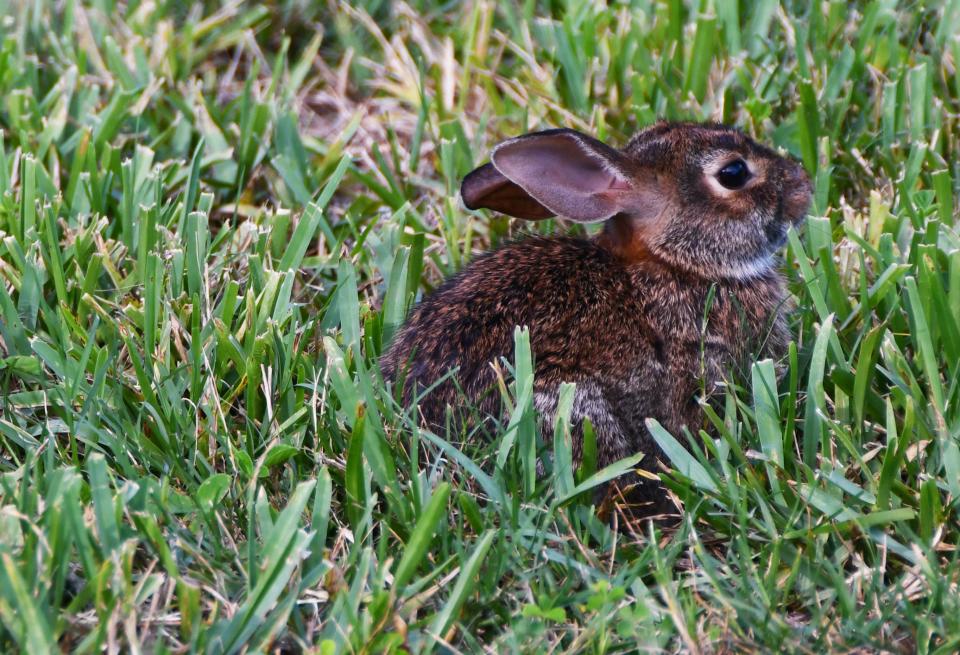Get ready for the Easter bunny — and cottontail babies. What to do if you see them
Easter is here, and while observers hide eggs and take pictures with the Easter bunny, eastern cottontails in Indiana begin to have their first of as many as seven litters.
Cottontails are prolific breeders and Hoosiers may find babies in their yards or in nearby woods and fields. These rabbits look for habitat along the edges of open spaces but are adaptable and can find homes in other habitats.
What to do with orphaned baby rabbits
If Hoosiers find baby rabbits in the yard, it may seem like a good idea to try and help, but experts say the best thing to do is leave them alone.
Mothers will leave babies in divots and depressions hidden under vegetation for most of the day while returning for short periods to nurse the babies. If a young cottontail is truly abandoned or injured, call a licensed wildlife rehabilitator.
In Indiana, it’s illegal to possess wildlife, including cottontails, without special permits.

Indiana’s eastern cottontail populations
These reddish brown or gray cottontails are common throughout Indiana. Populations cycle between high and low depending on several factors including predators, food sources and weather conditions. Populations peak every 10 years or so.
A full-grown cottontail can grow up to 19 inches long and weigh an average of 2 to 3 pounds, with females weighing more than males.
Wild cottontails can live up to five years, but the average life expectancy for those that are old enough to leave the nest is only around 11 months.
When is Easter 2024?: Here's your guide to celebrating the holiday with kids
How to create a rabbit friendly yard
The National Wildlife Federation launched a program dedicated to helping people plan and grow habitat beneficial to local wildlife in their yards.
The NWF website includes a short quiz to help plan and purchase native plants to keep pollinators, birds and small mammals content.
Don’t release domestic pets into the wild
Animal shelters and rabbit advocates across the U.S. urge people not to purchase rabbits as pets for young children. While the baby domesticated rabbits are cute, they quickly become high-maintenance pets.
These store-bought rabbits do not have the needed skills to survive in the wild. They lack the ability to forage for food and don’t have the same survival instincts wild cottontails do.
If a domestic rabbit does manage to survive, it can quickly reproduce and create colonies not native to the landscape.
Karl Schneider is an IndyStar environment reporter. You can reach him at karl.schneider@indystar.com. Follow him on Twitter @karlstartswithk
IndyStar's environmental reporting project is made possible through the generous support of the nonprofit Nina Mason Pulliam Charitable Trust.
This article originally appeared on Indianapolis Star: Easter in Indiana means baby cottontails start appearing

